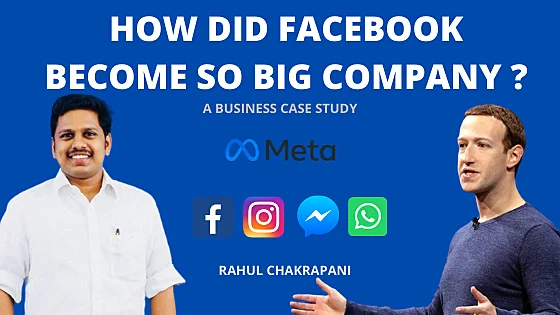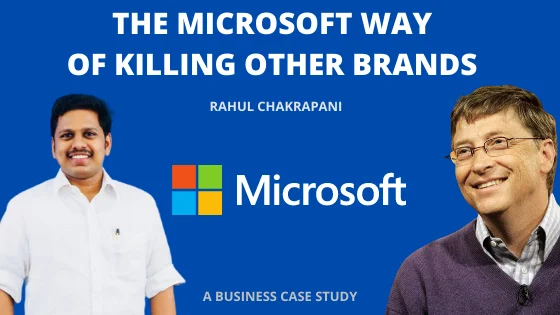Facebook a collage startup to billion doller company
We all know Facebook as the giant, powerful company that it is today
but very few of us know that when Facebook came out in the market
it was neither the first social media product in the market nor was it the best social media website in the market.
When Facebook came out,
there was already another social media website that had about 1 million users.
And it was already one of the most visited websites on the Internet.
But somehow, within the next four years,
Facebook made history by overtaking this huge company and went on to become
one of the most powerful companies on the planet.
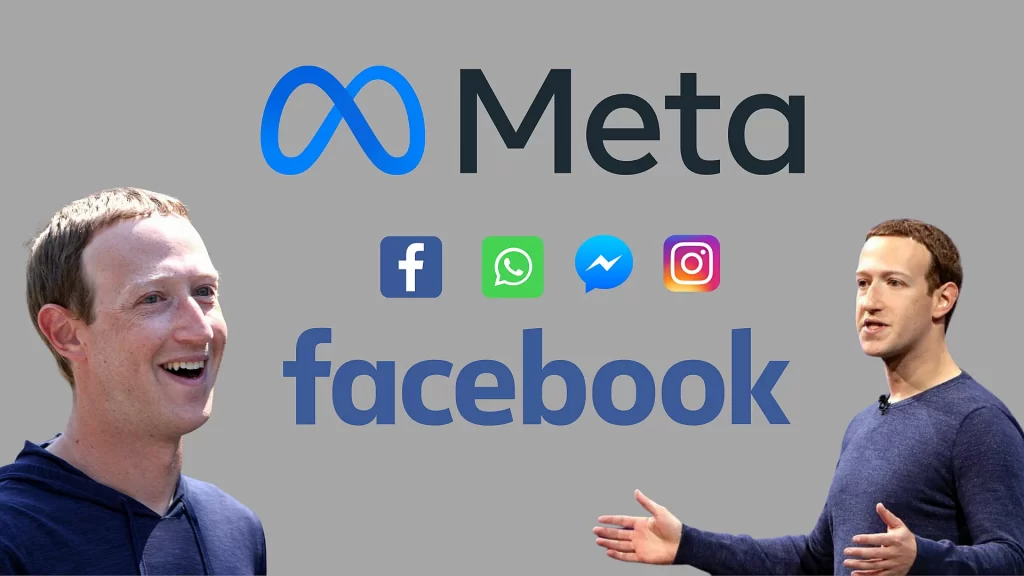
the reason why this happened has got some very very important business learnings for each one of us
because more often than not, we all must have had a brilliant idea
but then after doing a little bit of research, we tend to realize that there is already a giant company
like our competitors doing the same thing as we planned to do And that could be demotivating.
But guys, what if I told you that instead, you should be super happy to build a business
if there is already a giant competition in the market.
the fact that it will provide you with a golden opportunity to build a business.
The question is- How is it even possible and how can you go on to build a business to compete with a billion-dollar company.
Myspace : The early stages of social media
The answer to this question lies in a story that dates back to 2004.
This is when a social media website called Myspace had arrived on the Internet.
It was just like modern-day Facebook which allowed people to form connections
and helped them find new friends on the Internet.
And within just one year Myspace became a sensation in the making
with more than 1 million users signing up within the first month itself.
And by the end of the year, Myspace had 5 million users.
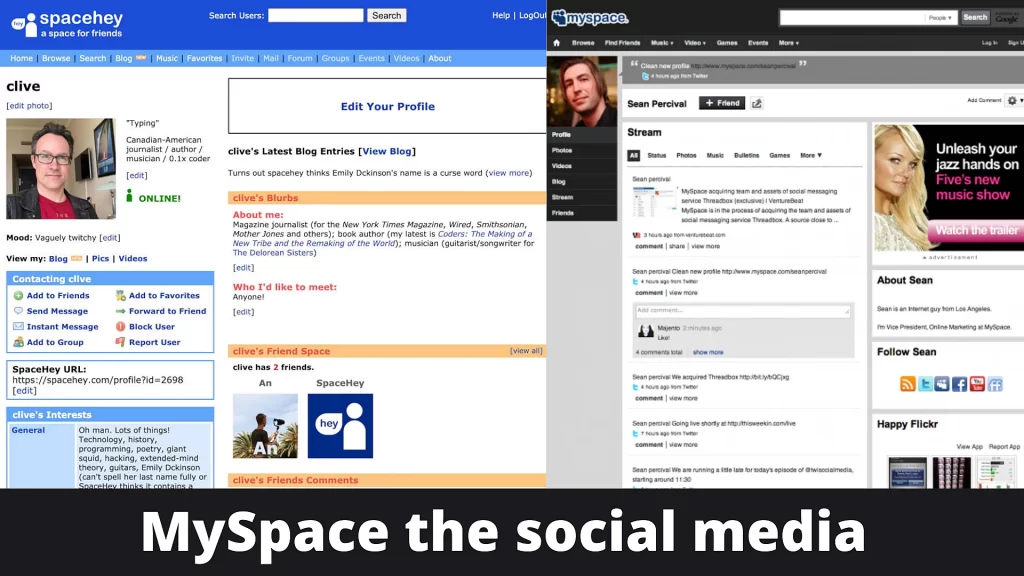
News Corpin to Social media
This is when in 2005, it got purchased by a gigantic media company called News Corp for $580 million.
Because somehow,
News Corp was one of those few organizations that realized the potential of social media ads, back in 2005.
And the day this purchase happened marked the beginning of the capitalistic Internet era.
During this time,
Facebook was just a college student website that was open to only Ivy League students in the US.
But on the other side, from 2005 to 2008 Myspace became the most visited social networking site in the world.
in 2006, it even surpassed Google to become the most visited website in the world.
But something happened in the next 4 years
because of which the same Myspace had 115 million users while
on the other side Facebook, the college community website had more than 1 billion users.
The question is What exactly happened and how did two companies despite being in the same space,
doing the same thing have such a vast difference in their success.
Social Network and human psychology
The first reason is based on the fundamental concept of social network and human psychology which is known as the triadic closure property.
And this is something that was suggested by german sociologists named Georg Simmel in 1908.
In simple words what it means is if there are three people:
Appukkuttan , ThomasKutty, and Mahadevan
If Mahadevan knows Thomas Kutty and Thomas Kutty knows Appukkuttan
then automatically, Mahadevan will form a connection with Appukkuttan
and Mahadevan will be more inclined to trust Appukkuttan
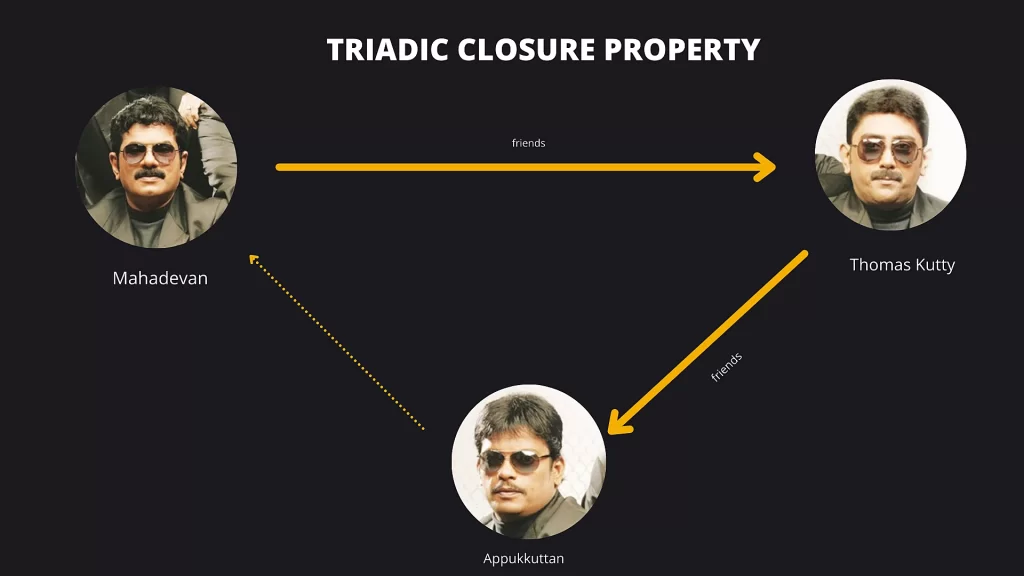
So,
if A knows B, and B knows C then
A is more inclined to form a connection with C eventually leading to the speed of trust.
And you must have observed this while you used Facebook or Instagram,
that is when you get a request from a person who has 200 mutual friends
you easily tend to accept their request.
At the same time if you get a request from a person whom you possibly know
but has got zero mutual friends there’s a little bit of scepticism that pops in.
This is how the triadic closure property plays out.
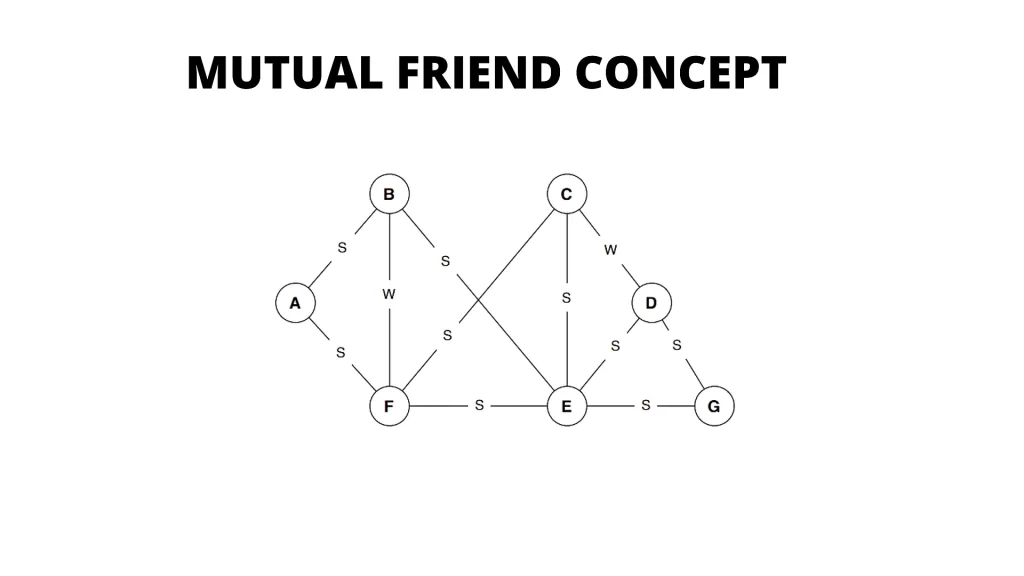
In the case of Myspace and Facebook, the major drawback with Myspace was that
it did not allow users to use their real names as their usernames, and because of this,
although you could meet new people on the Internet through similar interests
you couldn’t tell who exactly are you chatting with.
So, this kinda turned into a fine mix of privacy and creepiness.
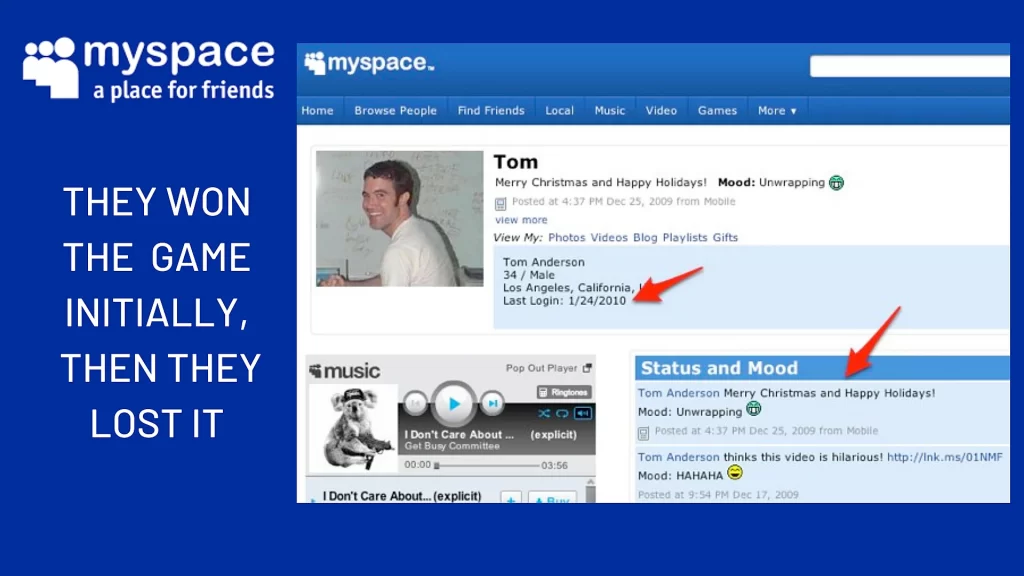
But on the other hand
Facebook insisted on getting people to use their real names as their usernames.
Why?
Because as legend has it,
Facebook was meant to stalk girls and if you didn’t know the names of those girls
stalking wouldn’t be user-friendly right?
Mutual friends connection in facebook
It was meant to be that way because Mark Zuckerberg believed in
helping people build authentic connections through digital technology.
And regardless of the truth behind this statement, the strategy of using real names
turned out to be Facebook’s X factor because of which apart from connecting with people
in their respective social circles, users started to expand their network to form second and third connections.
And this is where the mutual friend feature came in handy and because of this, the networks on Facebook
became far more deep-rooted and helped people expand their connections beyond their social circle.
And this is the reason why in 2006 when Facebook opened itself to the general public people flocked
to create a Facebook account despite having a Myspace account already.
Now,
this begs the question If this was just this simple feature of using real usernames that distinguished
Facebook from Myspace then why didn’t Myspace incorporate that feature and kill Facebook altogether?
This is what Facebook did with Snapchat right? By introducing Instagram stories.
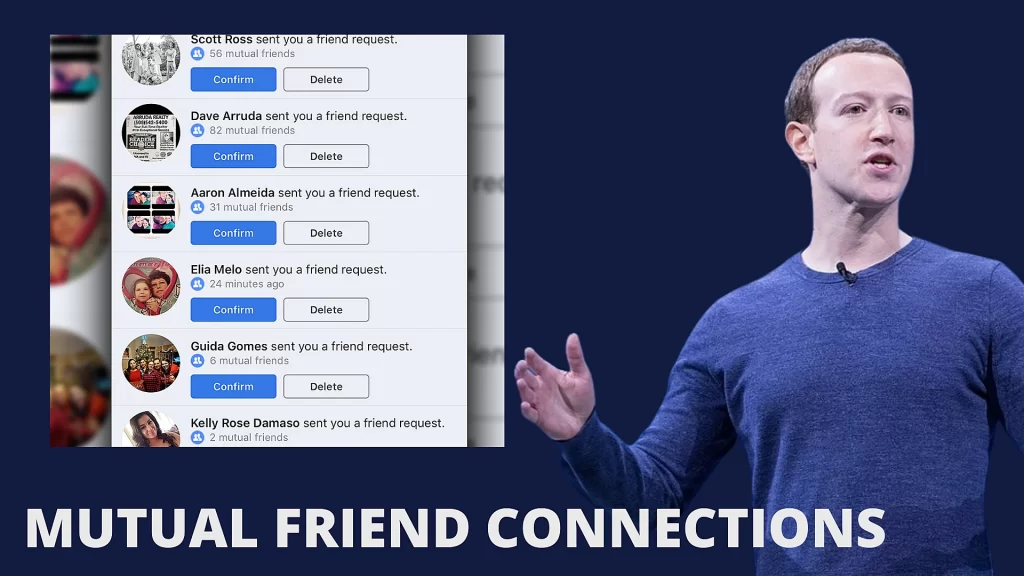
The Myspace team even had the backing of a large corporation like News Corp, right?
Then why couldn’t they incorporate this feature?
Well, as it turns out, this is exactly why they couldn’t incorporate the feature on their website.
Problems of MySpace & News Corp
Because News corp turned Myspace into a proper corporate organization
which had to follow protocols and procedures And more than the ideas and the execution,
the focus went to registering quarterly profits, yearly profits, and all the other corporate procedures.
Even if the Myspace team came out with a brilliant idea.
It first used to get scrutinized by the lawyers,
then by so-called experts, and then a series of meetings used to be held
and then a series of emails to be sent and it just kept going back and forth.
And in the process, things got so slow that the ideas just got lost in bureaucracy
and even something as simple as adding a feature also took forever to be executed.
While on the other side, Facebook was being run by a bunch of college students
who could add, change, modify and delete features overnight?
And make major modifications to the website without any formalities.
And unfortunately finally when Myspace incorporated the option of real usernames
it was already 2008 and Facebook had already surged way ahead.
Cold Fusion has covered this extensively in one of his videos.
So, to put that straight,
while Myspace became a rigid organization that was focused on procedures and protocols.
And was constantly debating about who is right and who is not.
Facebook with Revolutionary Moves
Facebook was obsessively focused on what is right and executed ideas with agility.
And this became the second reason for the fall of Myspace and the rise of Facebook.
And the story didn’t end here the rigid corporate structure of Myspace also lead to another
a huge setback that became the golden recipe for Facebook to surge way ahead of Myspace.
And this recipe also became a game-changer for Amazon, Google, and Apple.
And this was the idea of third-party integration wherein Facebook practically transformed from a product to becoming a platform.
On the 24th of May 2007, Facebook launched the Facebook platform to provide a framework
for software developers to create applications that could interact with the core features of Facebook.
For example,
Spotify could use Facebook API to allow users to share music directly within the Spotify application itself.
Candy Crush used Facebook for instant login and I’m sure most of you must have used it.
And thirdly, the Nike run club used Facebook API to enable its users to share the achievements
of their run with their friends by posting directly to Facebook’s news feed.
Facebook for Developers
So,
this way Facebook allowed developers and gave them the freedom to use their technology and build products and services of their own.
Whereas on the other hand, Myspace was set to be a notoriously closed system
and Myspace even used to block content from potential competitors.
And for some reason, it also ended up blocking Photobucket which was at that time the most popular photo-sharing website.
And this is the third reason why Facebook became an incredible platform
not just for consumers and advertisers but also for developers.
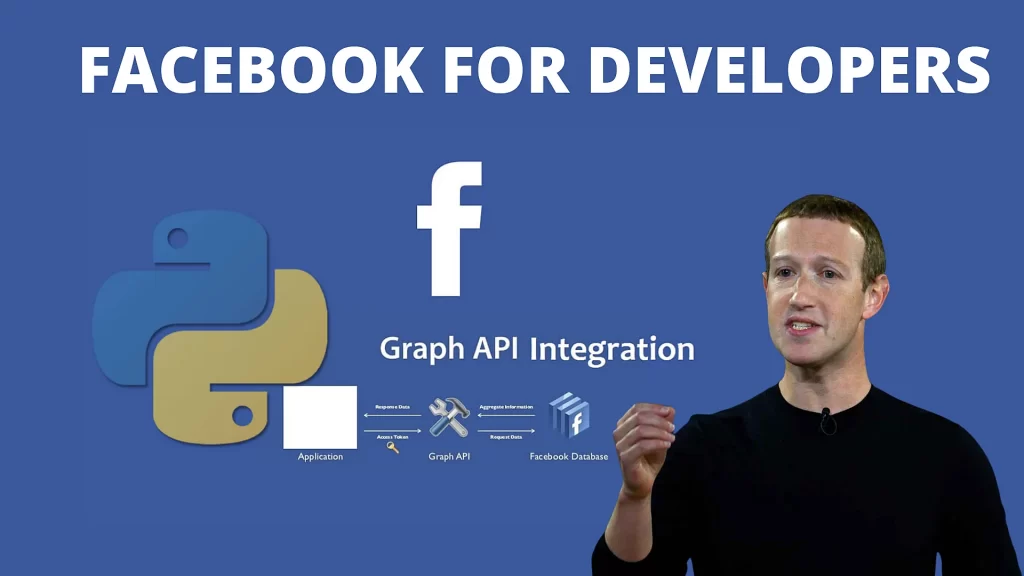
And by the way, this concept of going from a product to a platform is also the reason for the unprecedented
the success of Apple because back then even Steve Jobs was sceptical about allowing third-party developers.
But when Apple started providing its platform to developers the iconic App Store was born and that changed Apple forever.
Even Android did the same with Play Store.
BUT, BUT, BUT.
If you look at Nokia Nokia acted like Myspace
and made it very difficult for developers to operate because the Symbian OS was too rigid for third-party apps to be built upon.
And fast forward to 2006,
Amazon launched its version of third-party integration by allowing third-party sellers to use this technology to sell their products.
And guess what?
In 2020 alone, Amazon generated 80.46 billion dollars in third-party seller services revenue which is more than the revenue generated by its sellers.
This was the insane revenue stream that Myspace passed on and turned Facebook into the billion-dollar company that it is today.
lessons from facebook
Now, let’s talk about the 2 important lessons from this case study.
The Organizational Structure
Lesson number one,
Every entrepreneur and a leader needs to realize that the fundamental purpose of an organizational
the structure is not just to help you make strategic decisions
but to enable you to make those strategic decisions before it’s too late.
And the day you realize that these protocols are making the execution of ideas tedious you need to kill
those protocols straightaway or else those very same protocols will end up killing your organization.
Human-centred design of products
Lesson 2,
regardless of how marvellous your technology is if you’re building a business to consumer product human-centred
design must always be taken into consideration because if you see,
in this case,
it was the simple feature of mutual friends that got Facebook the same amount of popularity as Myspace.
Because knowingly or unknowingly
it abided by the triadic closure property. And last and most importantly,
even if you’re not the first mover in the industry it’s completely fine guys.
It is great because regardless of how big a company is
if they are venturing into a new space, they will make mistakes.
And if you carefully learn from those mistakes you can save yourself a lot of time, a lot of money, and a lot of effort.
more importantly,
merely by learning from those mistakes you will have the opportunity to race ahead of the game
Because after all,
wisdom is that attribute that often separates a few legendary entrepreneurs from the many good ones.
